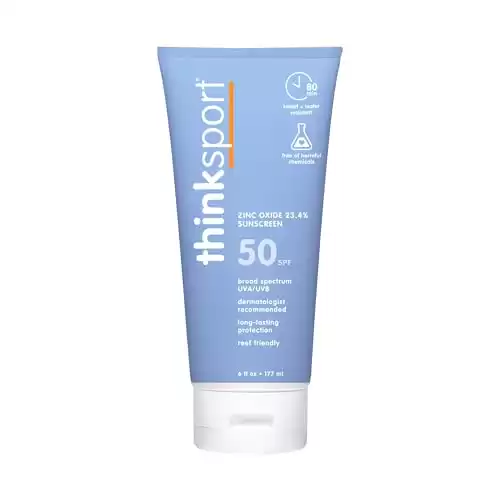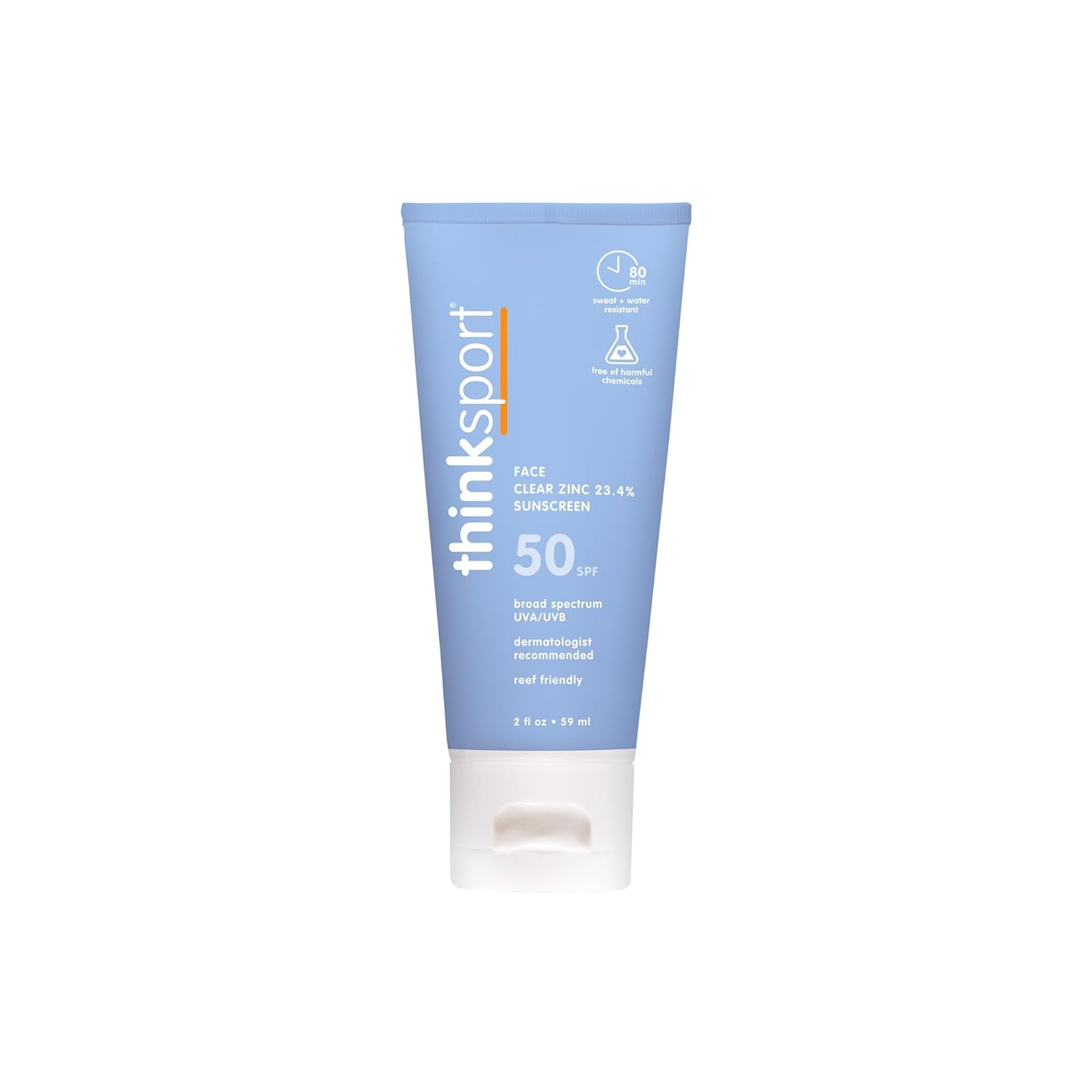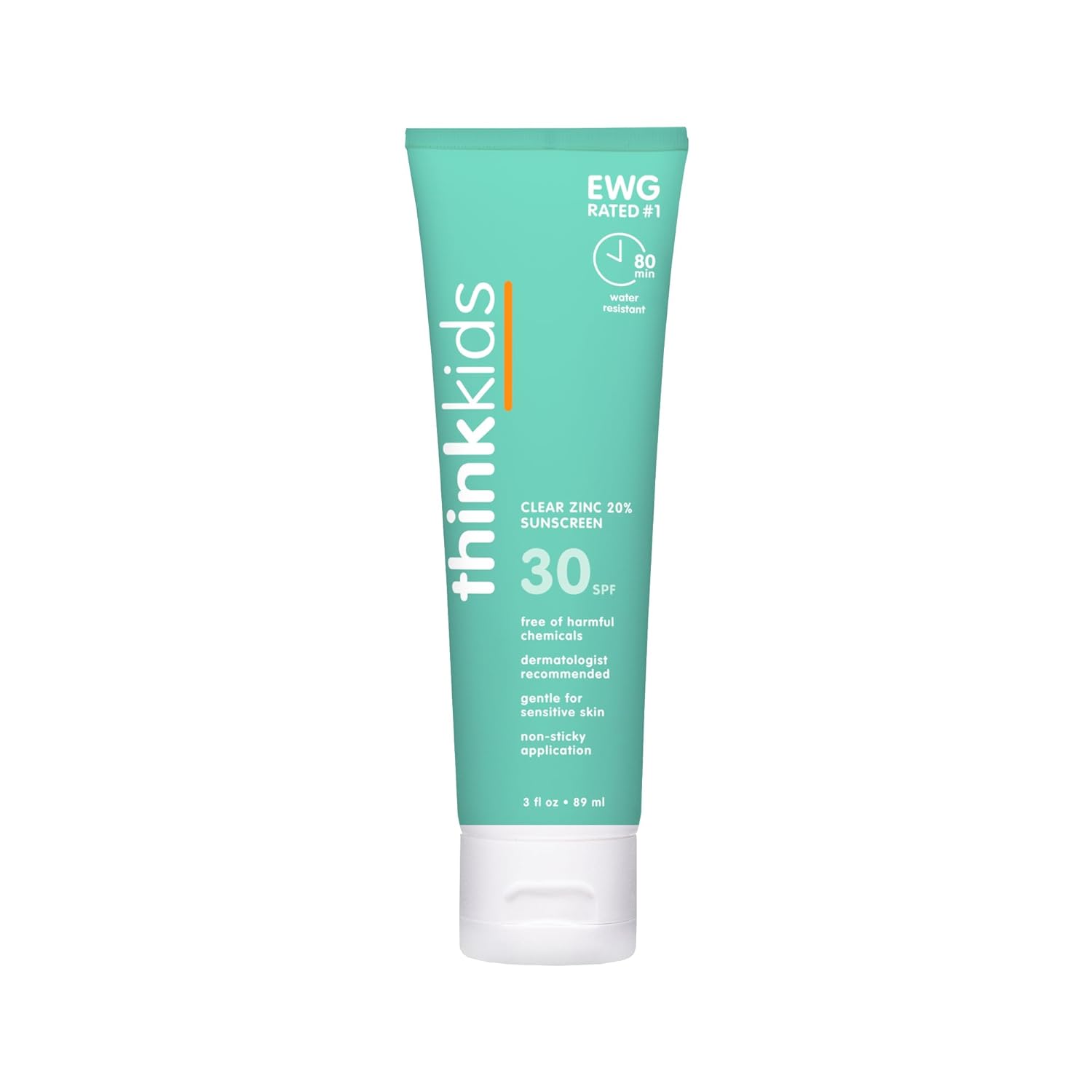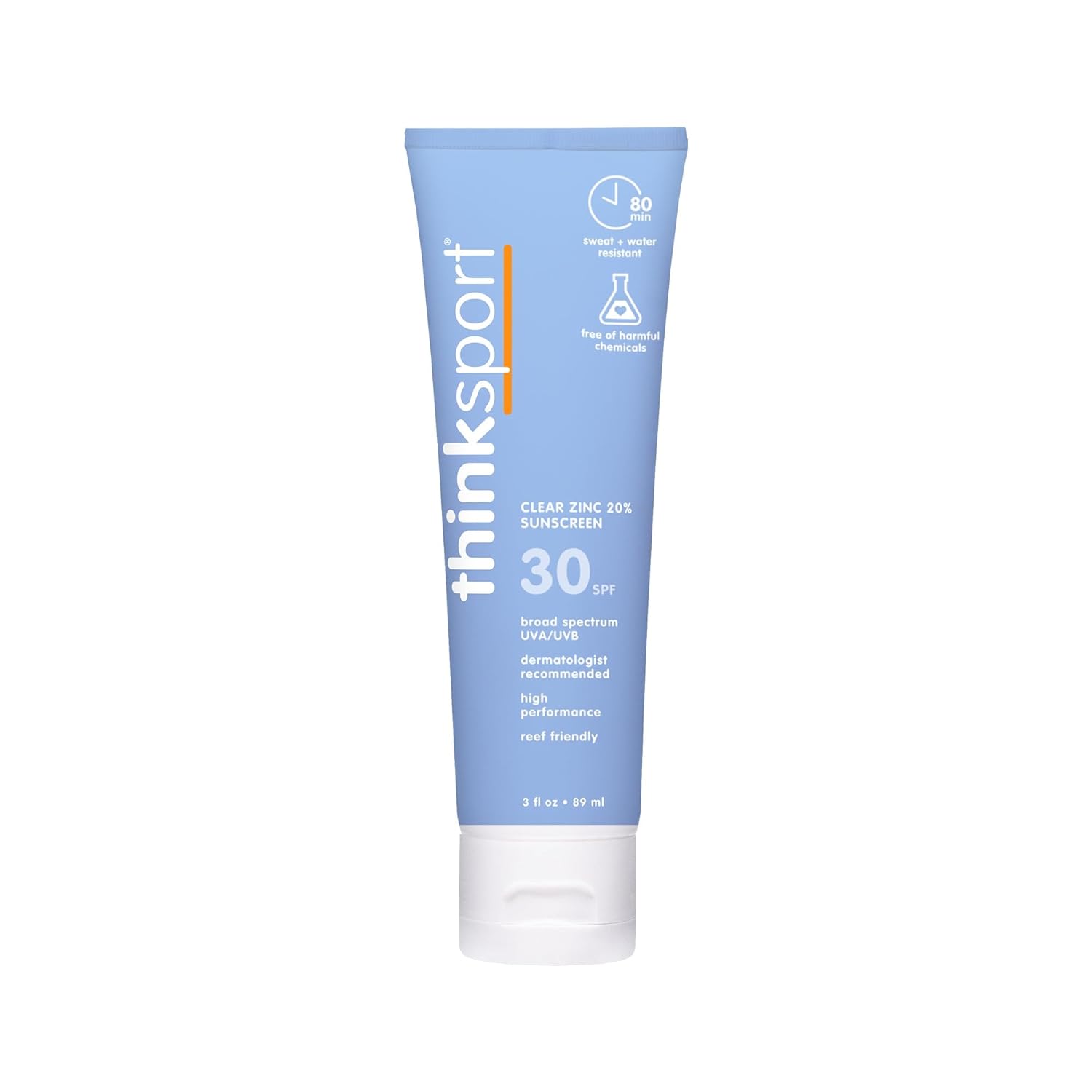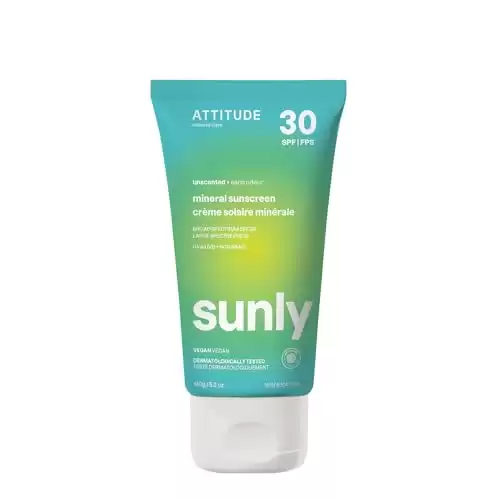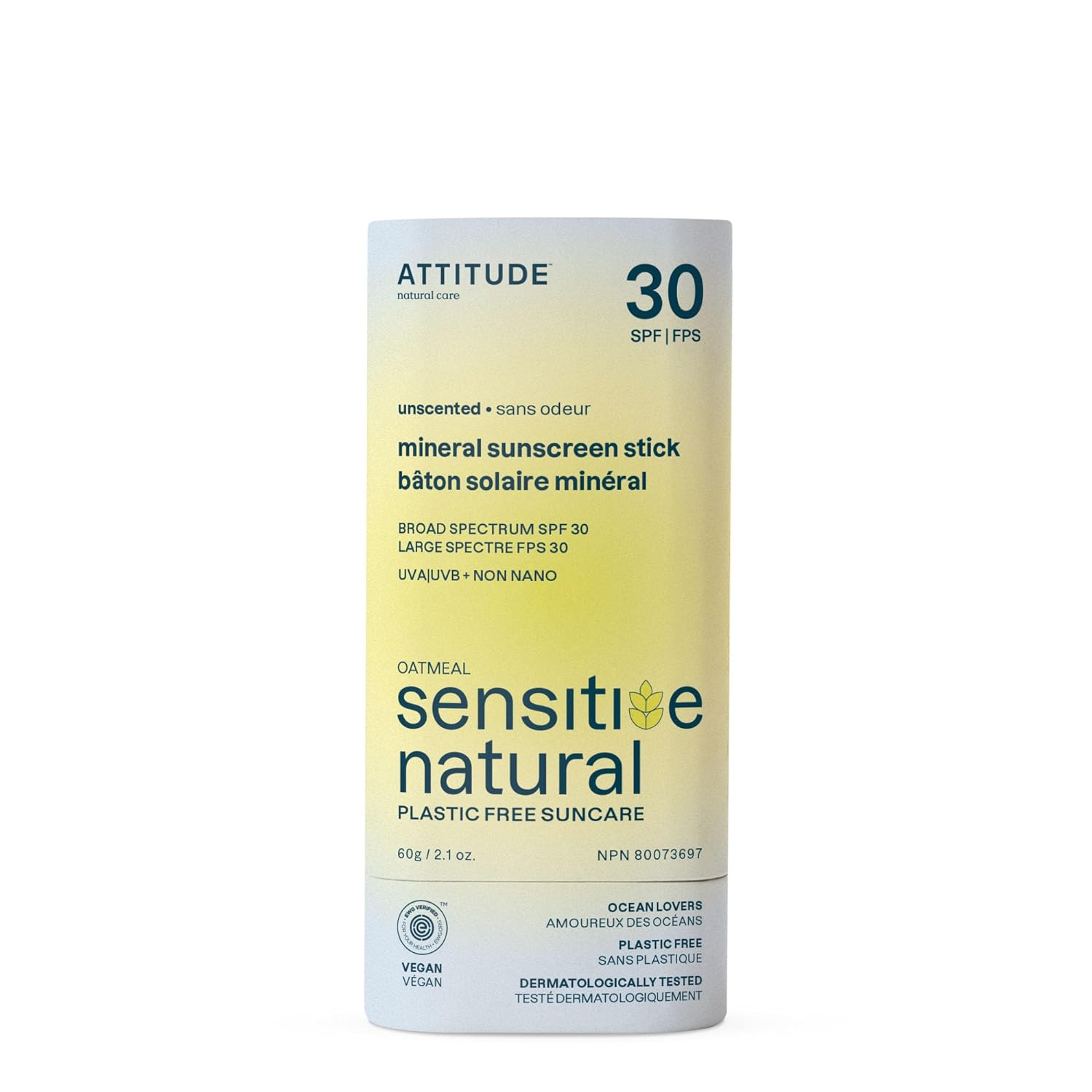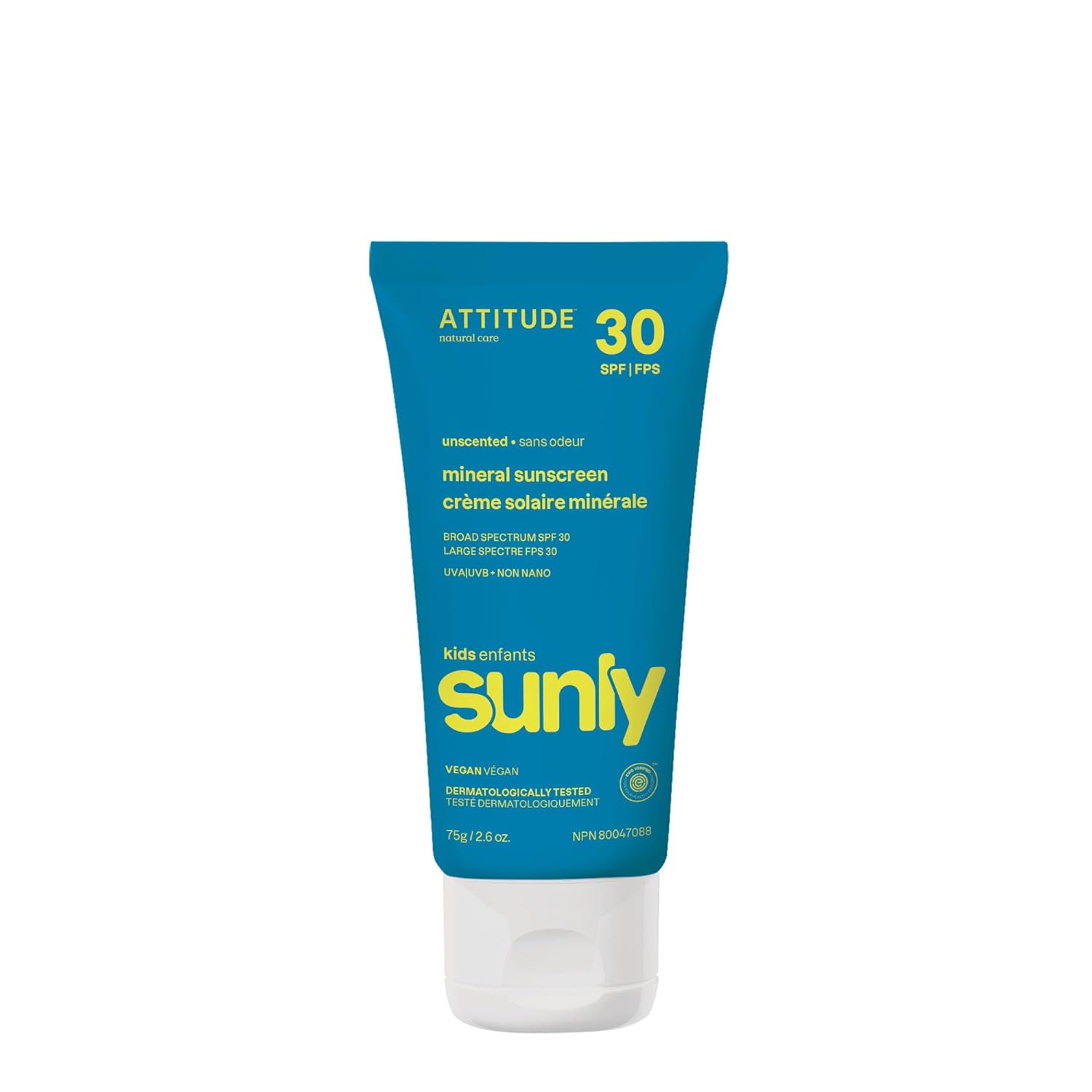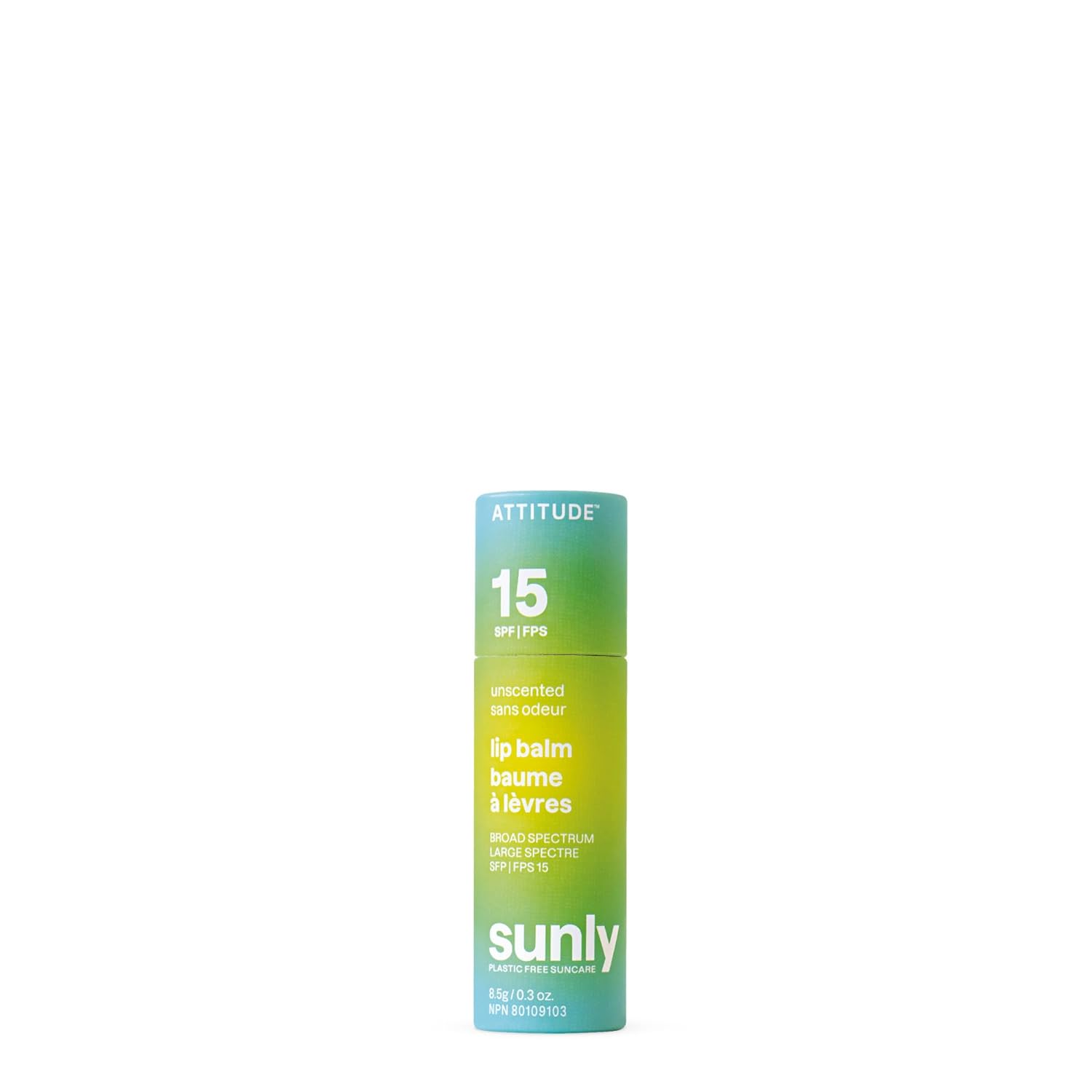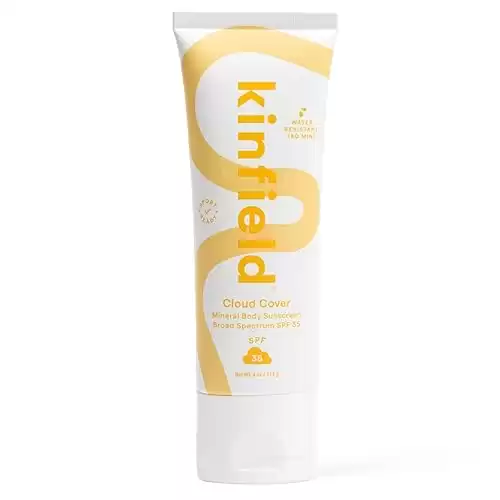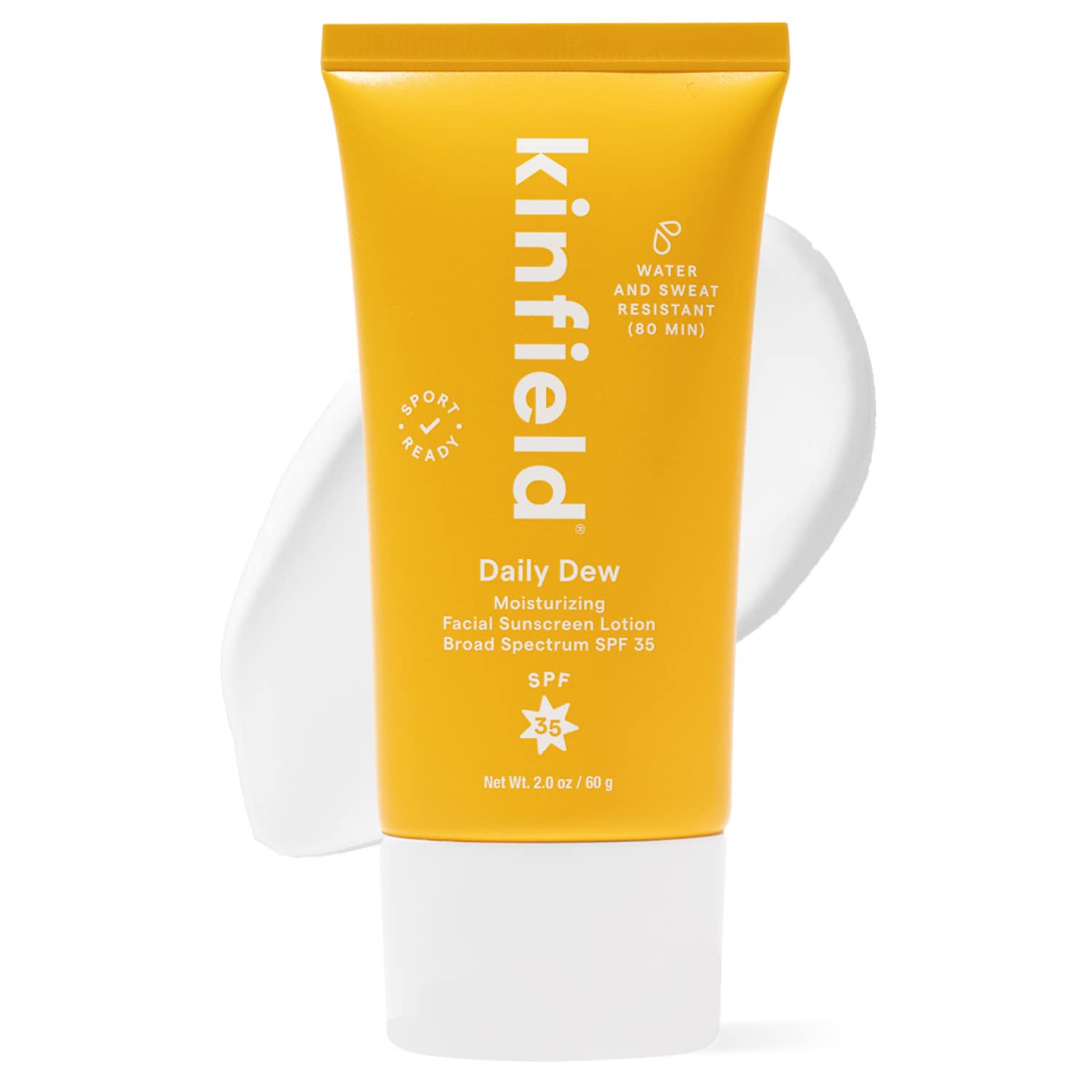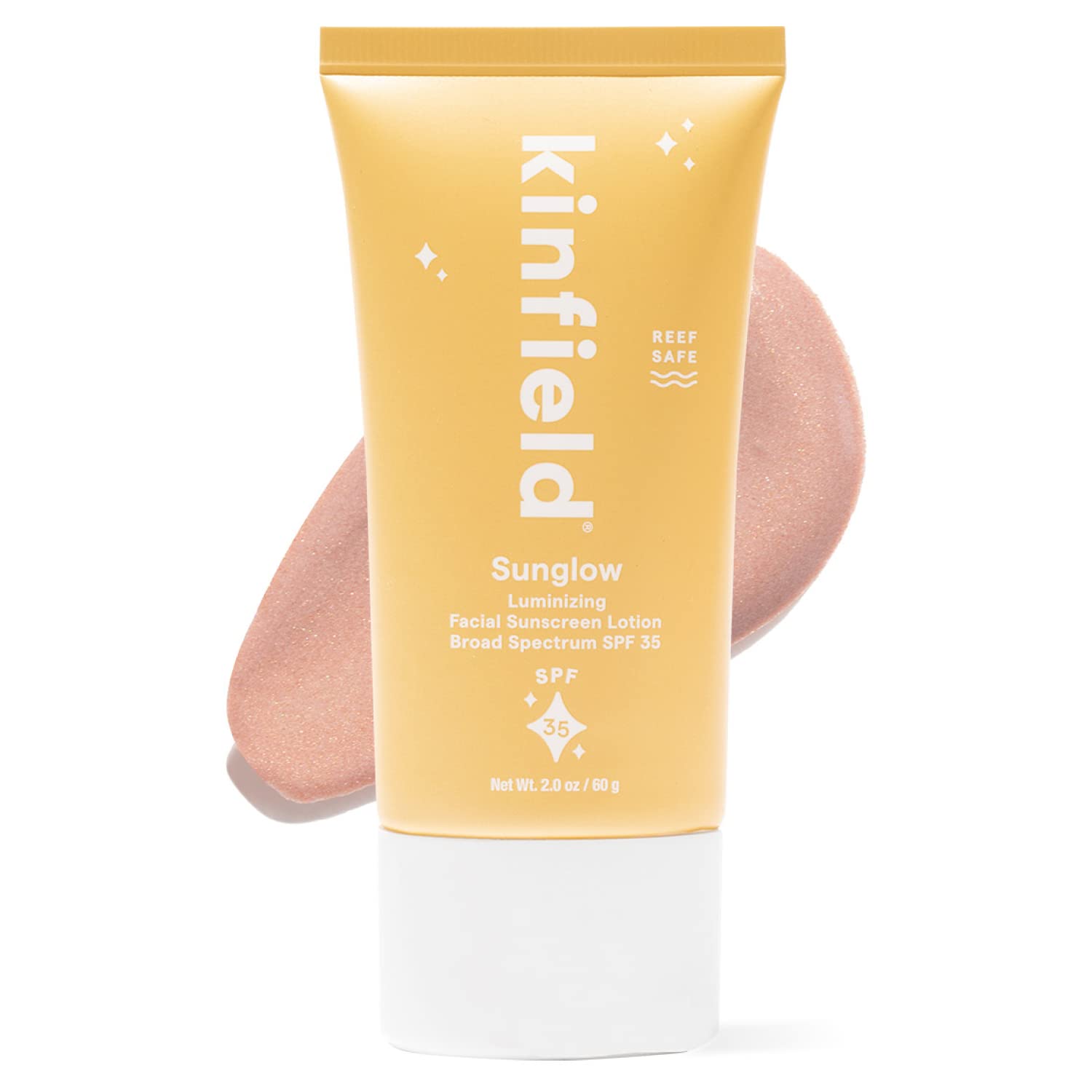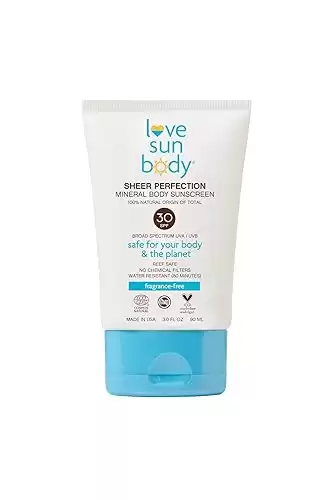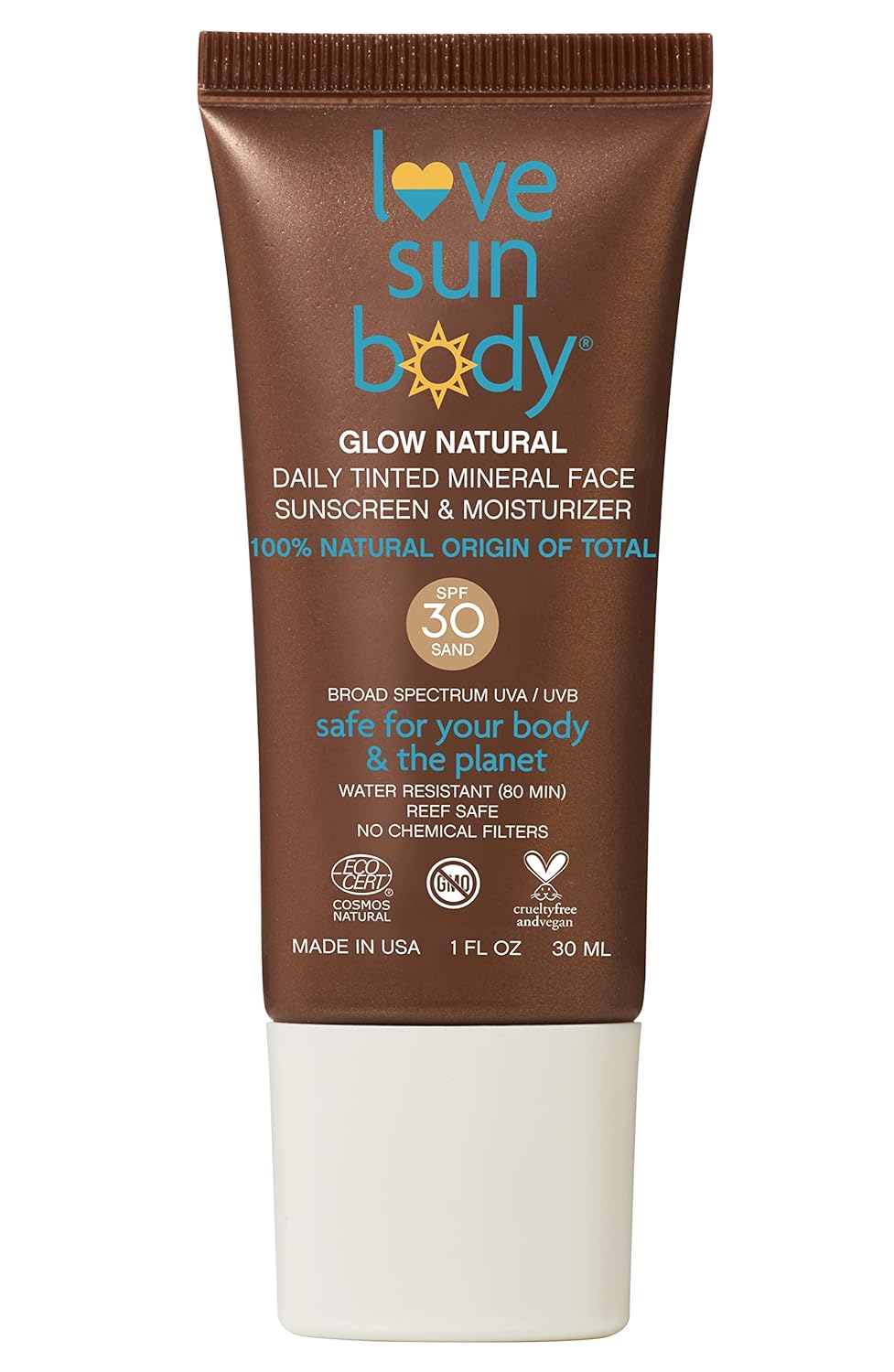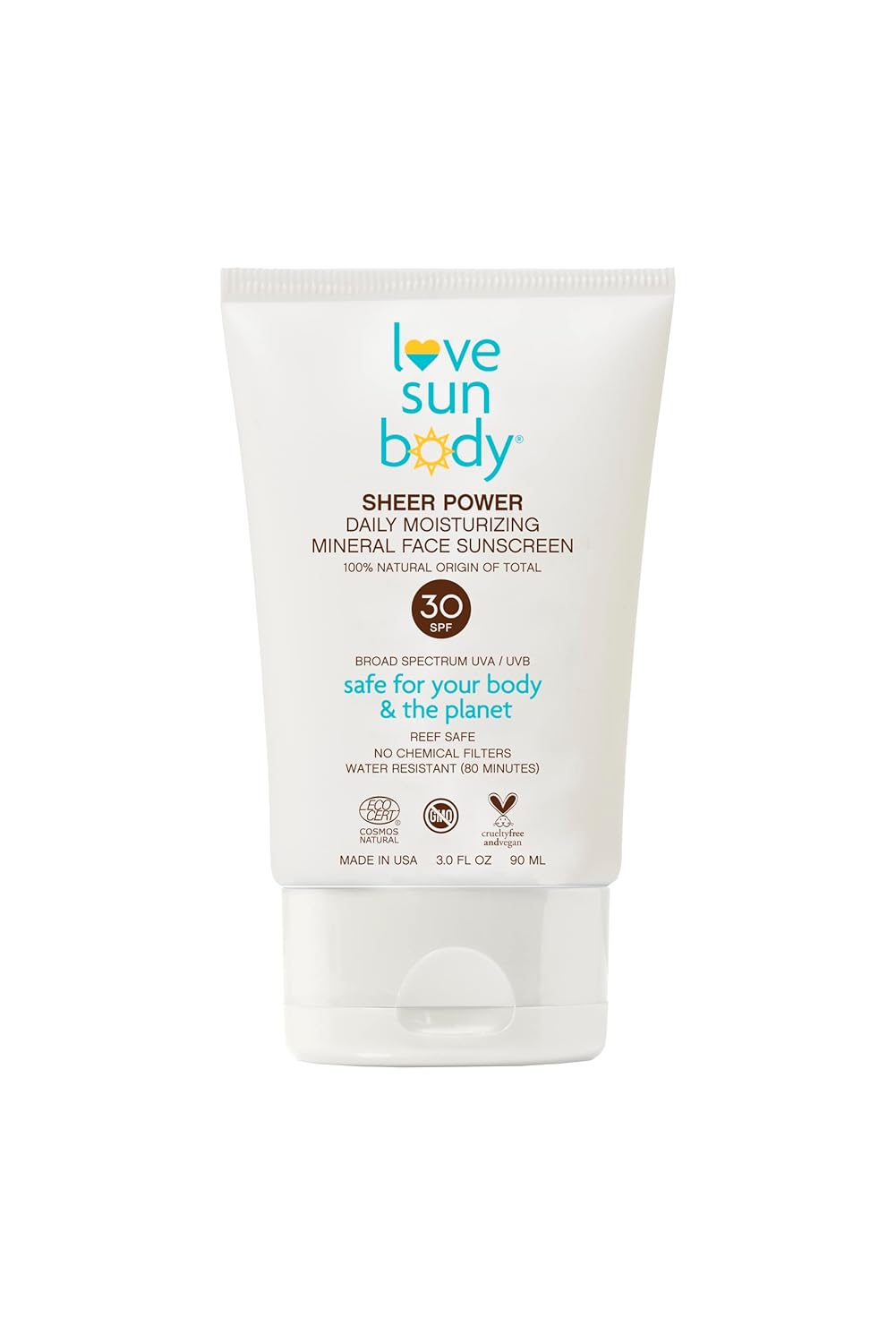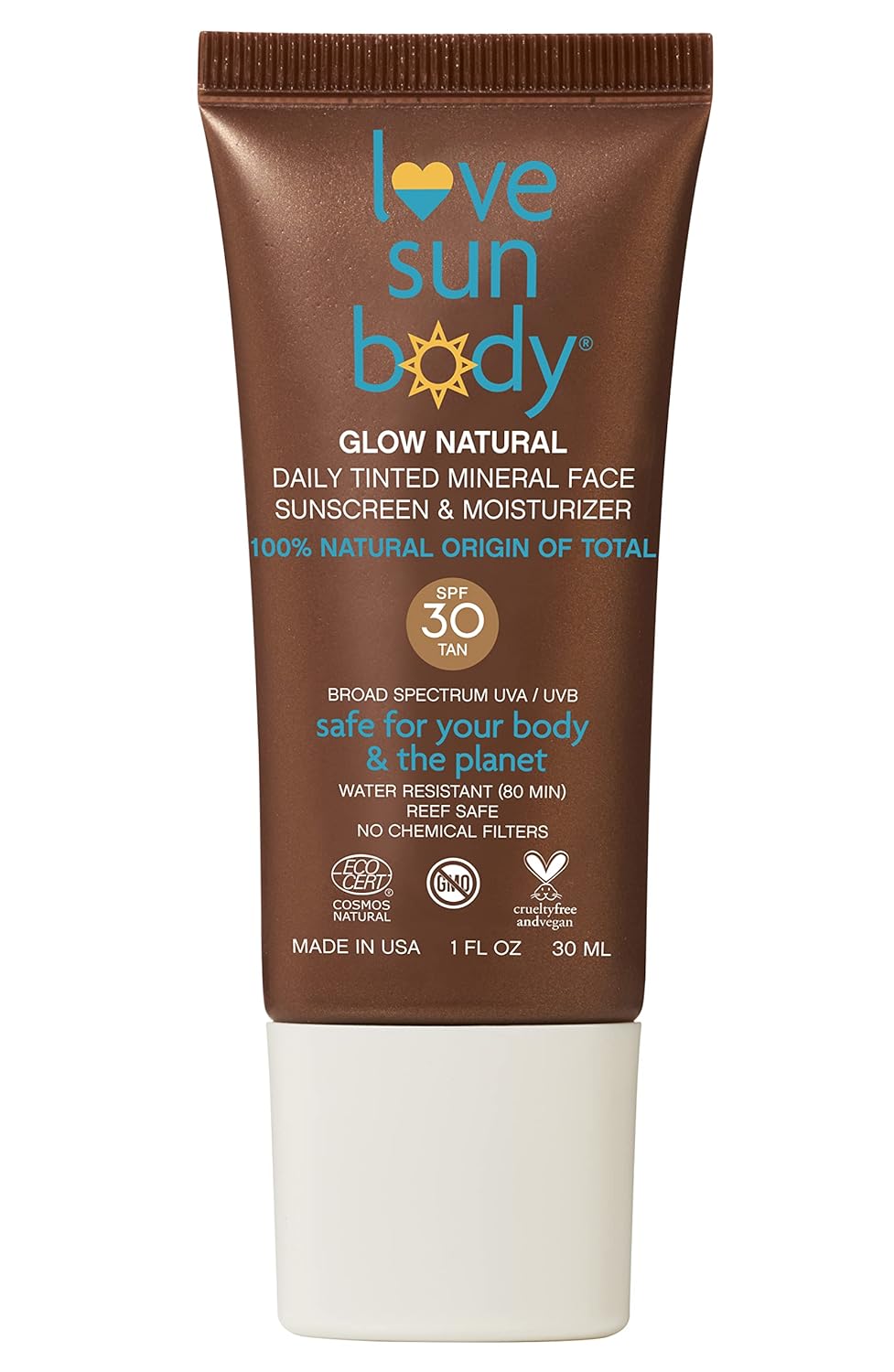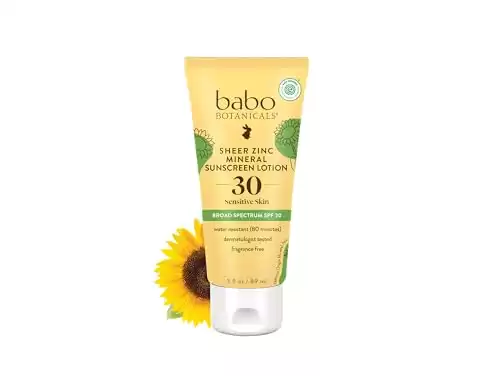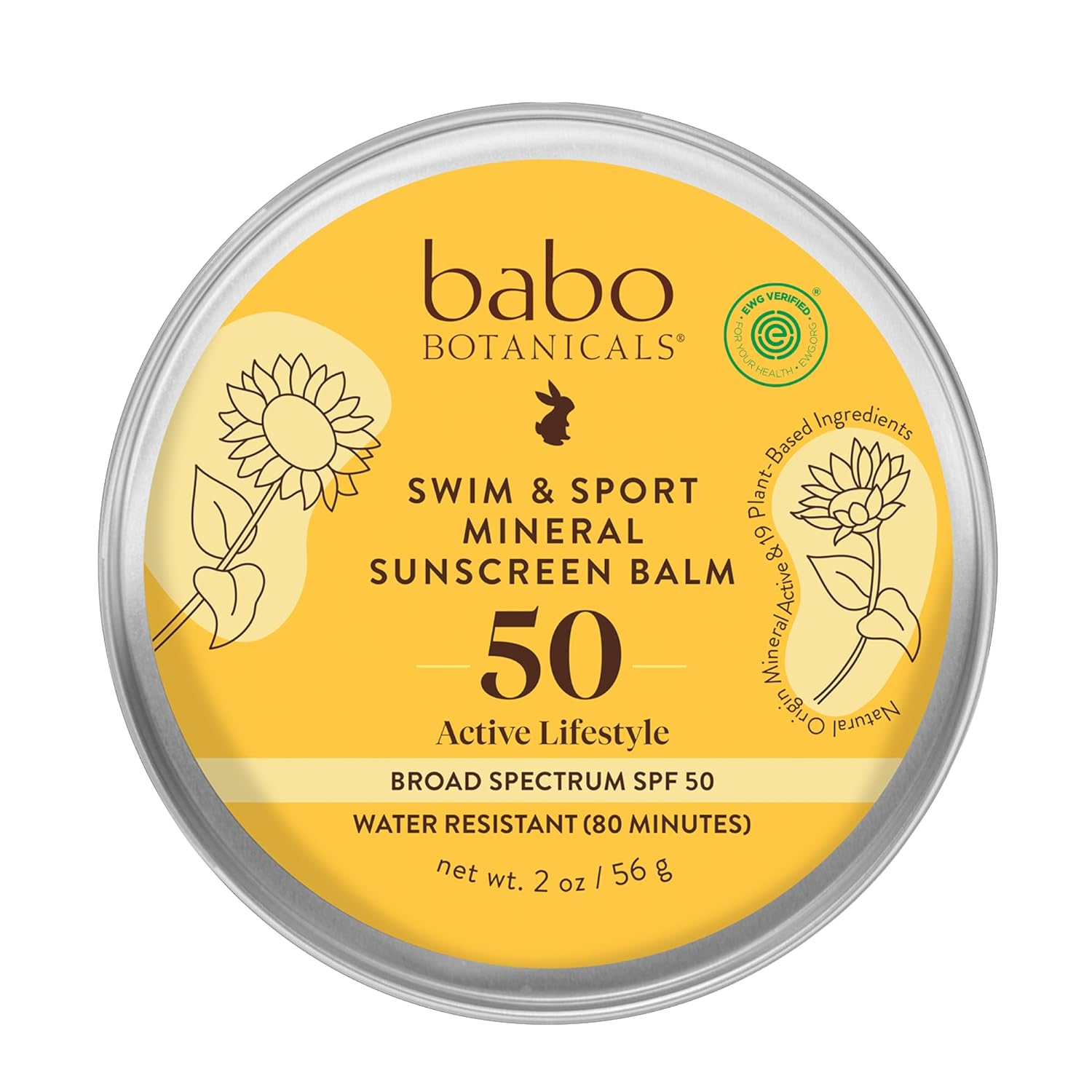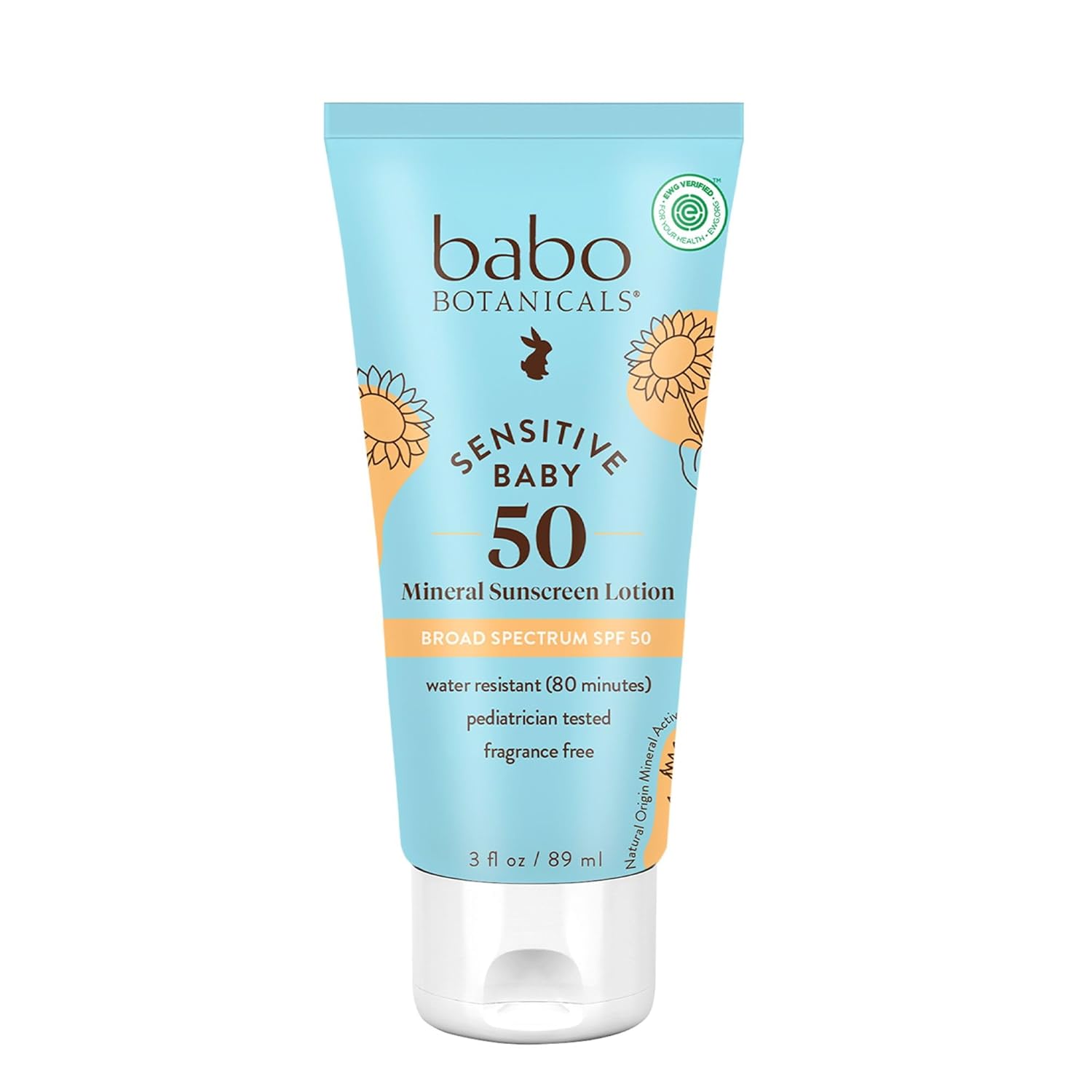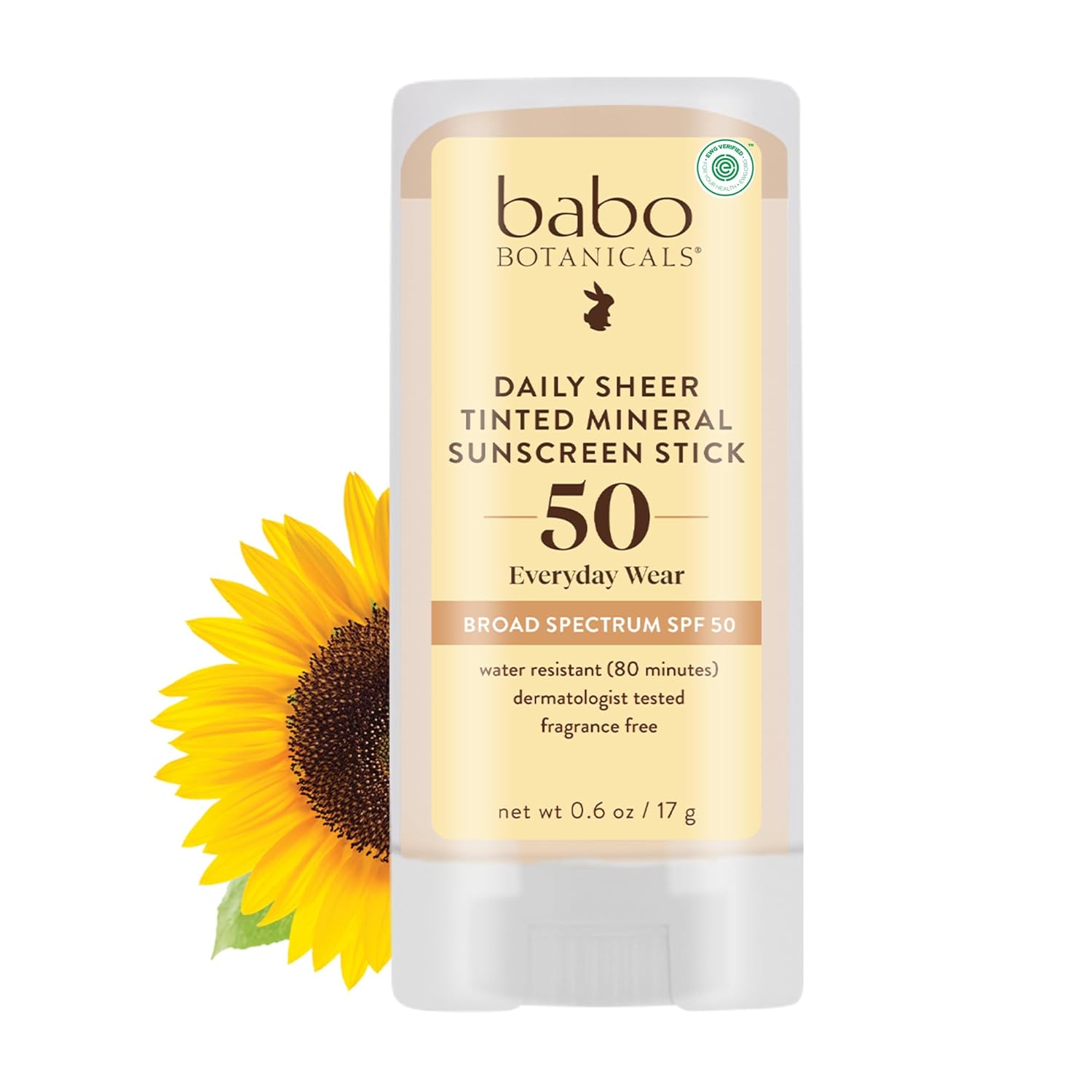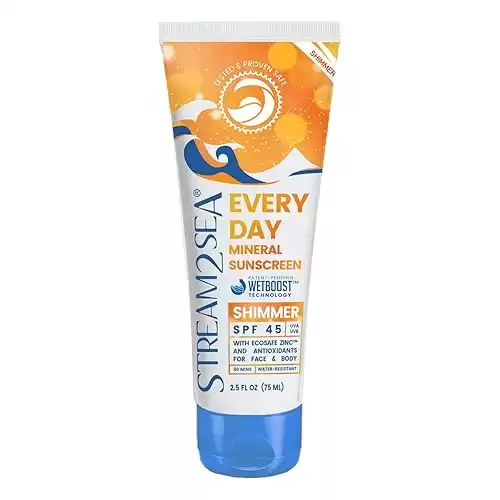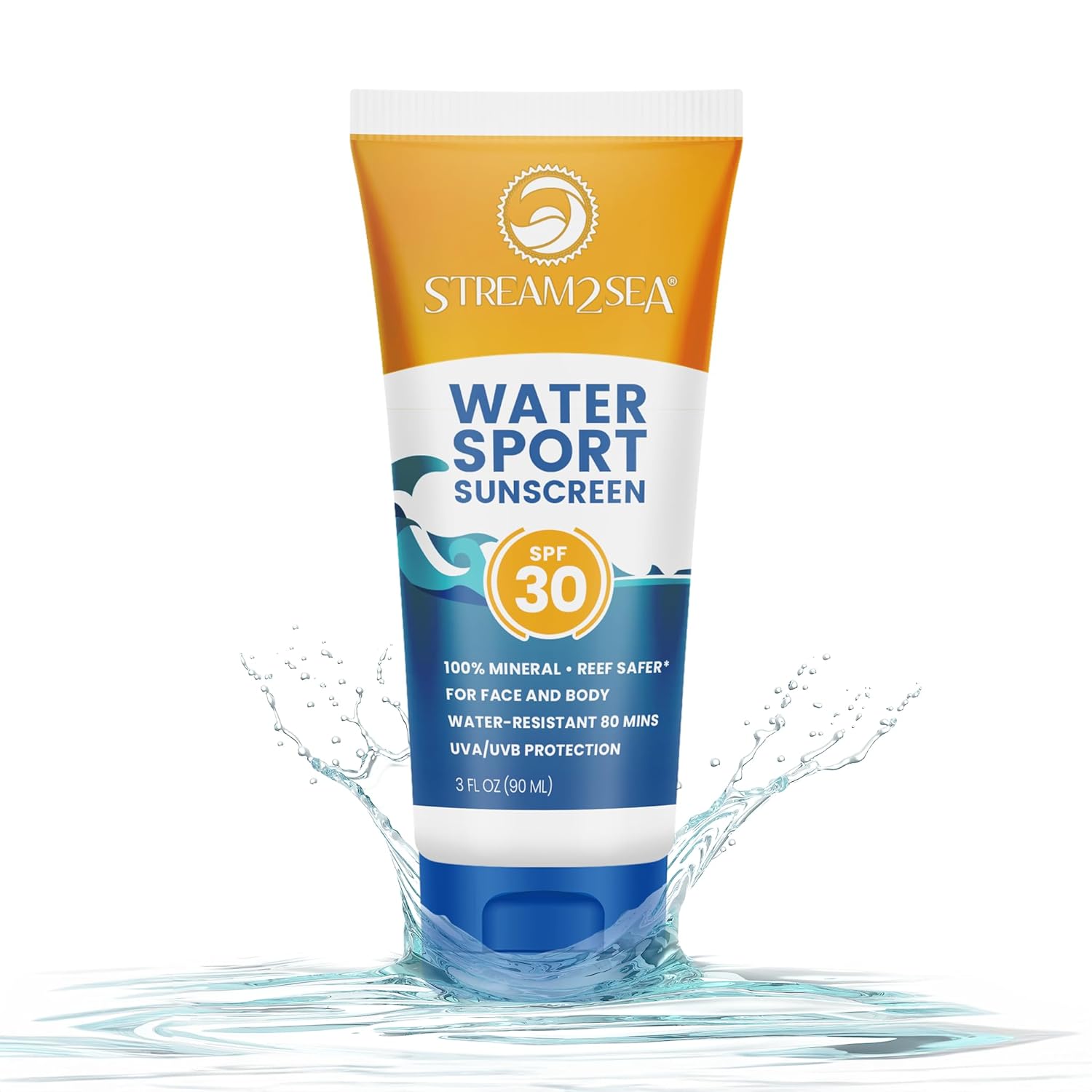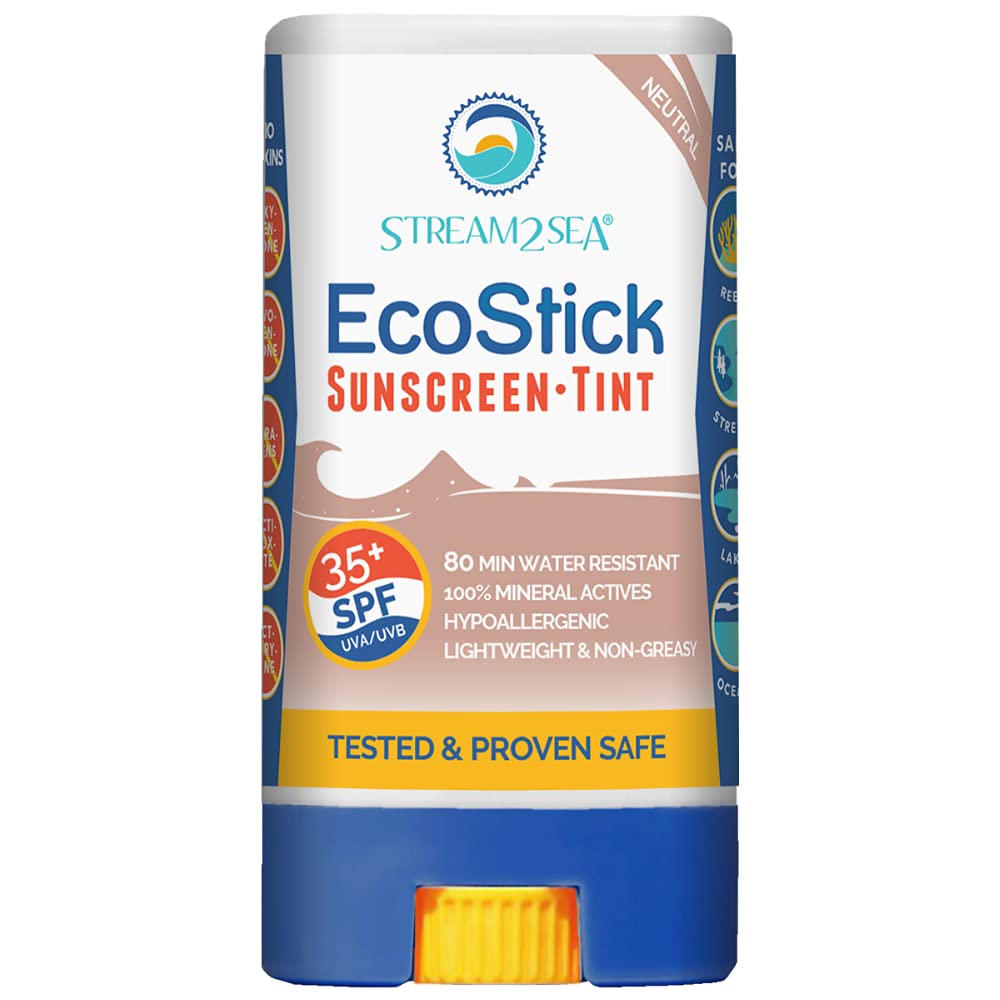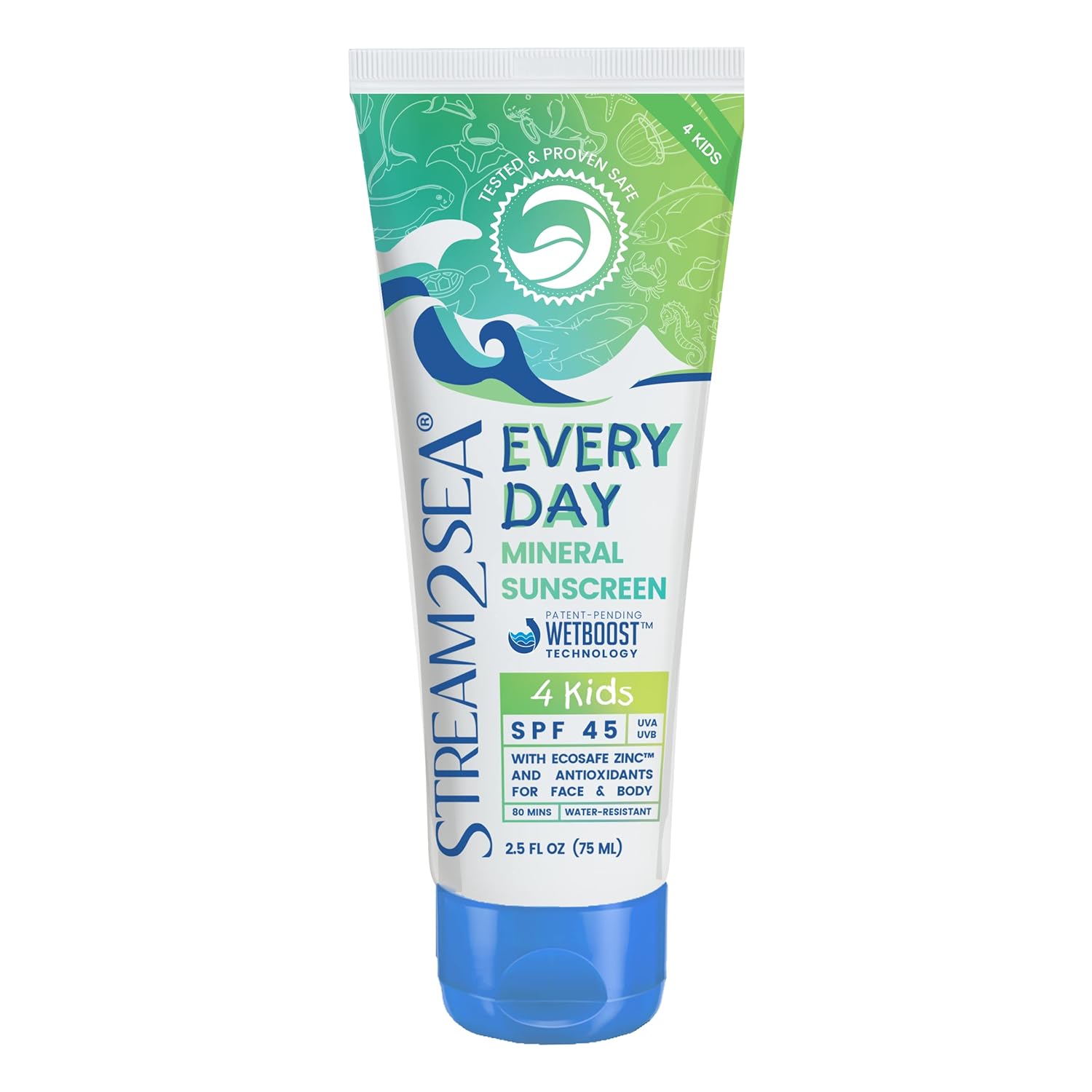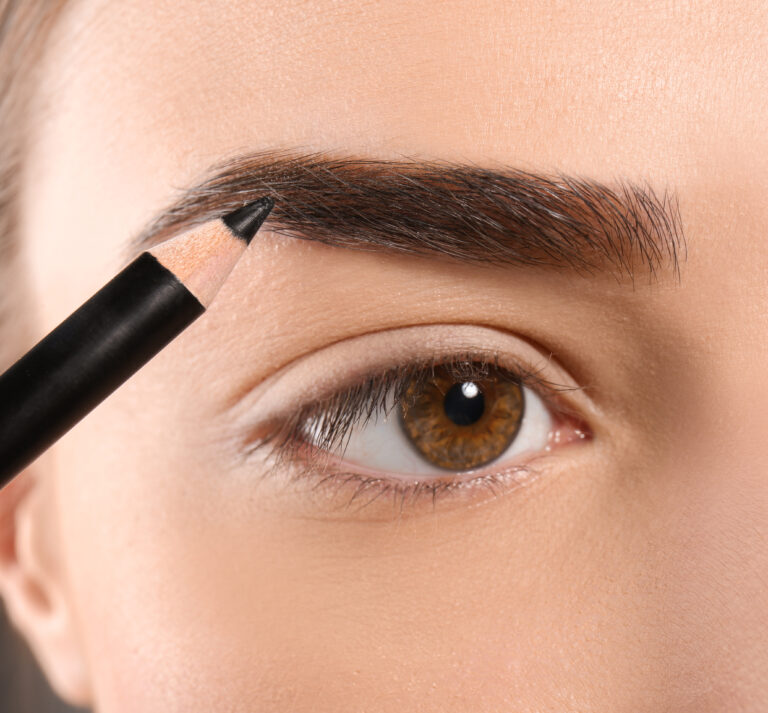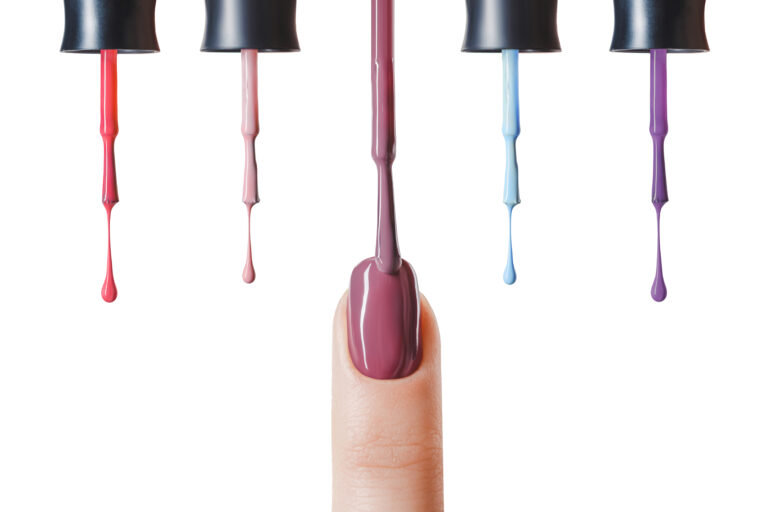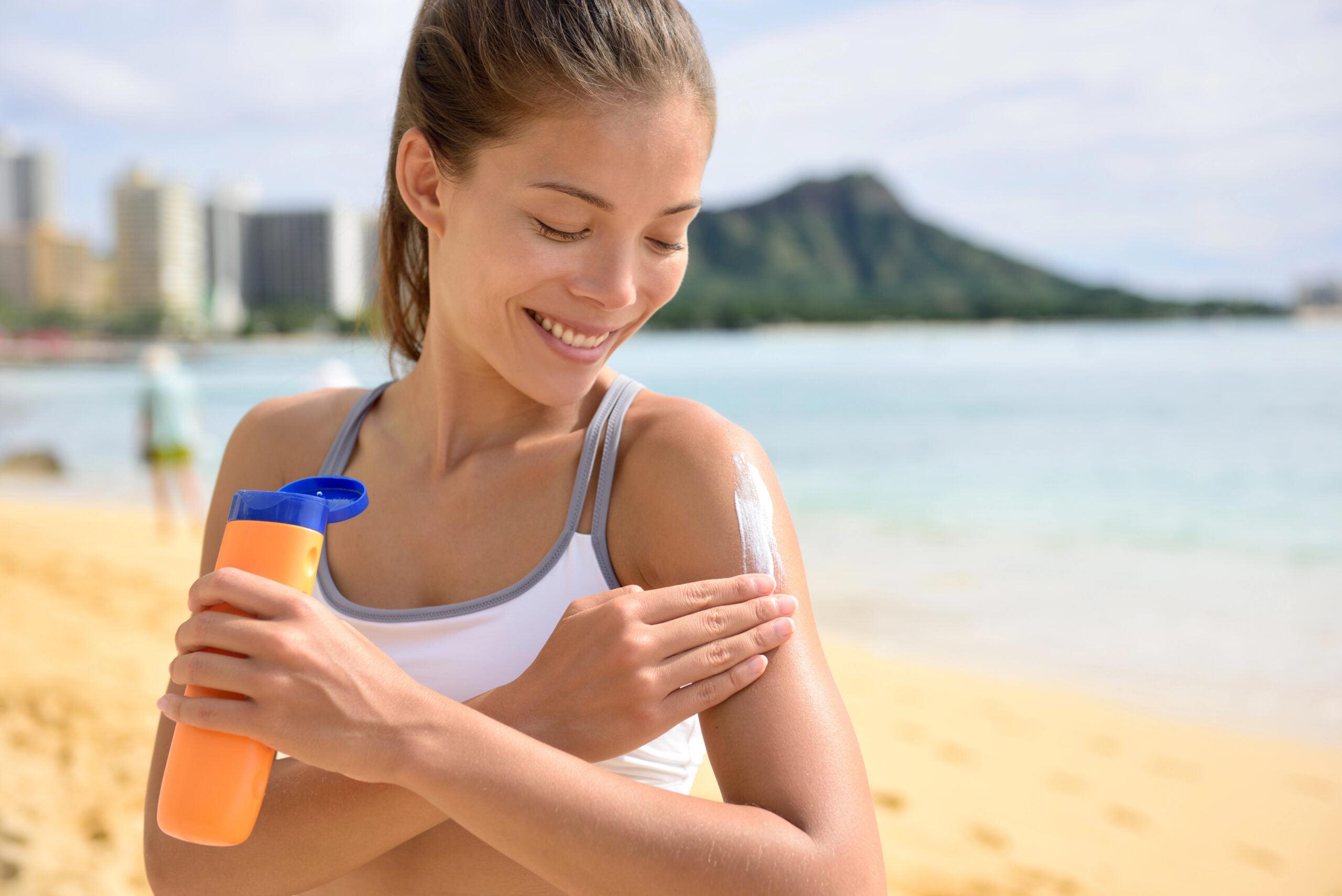
Disclosure: Some of the links in this post are affiliate links, meaning we may earn a small commission if you make a purchase through them.
Sunscreen isn’t just a beach-day essential—it’s a daily defense against premature aging, painful burns, and the very real risk of skin cancer. But not all sunscreens are created equal. While they’re supposed to protect us, many conventional sunscreens fall short, making non-toxic sunscreen a better, safer choice.
Some contain ingredients that do more harm than good—think hormone disruptors, skin irritants, and chemicals that don’t just stay on your skin but end up in your bloodstream, waterways, and even marine life—have you ever heard of oxybenzone? It’s been linked to coral reef damage and raises serious red flags for human health. And that’s just one of many concerning additives hiding in those brightly colored bottles at the drugstore.
Even more alarming, a 2021 study by Valisure, an independent laboratory, found that 27% of nearly 300 sunscreen products tested contained benzene, a known human carcinogen.1 This means that some sunscreens intended to protect you from skin cancer could expose you to a cancer-causing chemical.
The takeaway? Safe, effective, and genuinely non-toxic sunscreens exist—you must know what to look for. This guide will explain exactly what makes a sunscreen non-toxic, which ingredients to avoid, and the best options for every skin type, budget, and lifestyle. Because protecting your skin shouldn’t come at the cost of your health (or the planet’s).
What Makes a Sunscreen Non-Toxic?
With so many sunscreen options, it can be tricky to tell which ones are safe for your skin and the environment. Many conventional sunscreens contain chemicals that can disrupt hormones, trigger allergic reactions, and even contribute to coral reef damage. So, what makes a sunscreen truly non-toxic?
Mineral vs. Chemical Sunscreens: What’s the Difference
The most significant distinction in sunscreen formulas is mineral vs. chemical UV filters.
Chemical Sunscreens: These sunscreens soak up UV rays, turn them into heat, and release them from your skin. While this sounds okay, the problem is that some of the ingredients can get into your blood, sometimes just hours after applying. The FDA has raised concerns about oxybenzone, octinoxate, homosalate, and avobenzone because they might affect hormones or cause skin irritation.2
Mineral Sunscreens: These are also called physical sunscreens. They use zinc oxide or titanium dioxide to form a barrier on your skin that blocks UV rays. Unlike chemical sunscreens, mineral sunscreens stay on top of your skin, not absorbed into it, making them safer for you and the environment.
Reef-Safe, Non-Nano, and EWG-Approved: Why It Matters
Choosing a reef-safe sunscreen isn’t just good for the planet—it’s becoming necessary. Studies show that thousands of sunscreen chemicals wash into the ocean yearly, contributing to coral bleaching and marine ecosystem damage. Many toxic sunscreens are now banned in reef-sensitive areas, so looking for a reef-safe label ensures your sunscreen isn’t harming aquatic life.
Another critical factor is non-nano zinc oxide or titanium dioxide. “Nano” refers to tiny particles that can be absorbed into the skin and even enter the bloodstream. Non-nano formulas use larger particles that stay on the skin’s surface, making them the safer choice.
Lastly, the Environmental Working Group (EWG) is a trusted resource for evaluating sunscreen safety. If a sunscreen is EWG-verified, it has been tested and found to be free from harmful chemicals while still providing strong sun protection.
Health Risks of Chemical Sunscreens
Chemical sunscreens often contain active ingredients like oxybenzone, octinoxate, homosalate, and avobenzone. These compounds work by absorbing ultraviolet (UV) radiation, but their safety has come under scrutiny due to potential health concerns:
- Hormone Disruption: Some studies suggest that oxybenzone and octinoxate may interfere with endocrine functions, potentially leading to hormonal imbalances.
- Skin Irritation: Individuals with sensitive skin may experience allergic reactions or irritation from certain chemical filters.
Harmful Ingredients to Avoid in Sunscreens
If you’re shopping for a non-toxic sunscreen, keep an eye out for these problematic ingredients:
- Oxybenzone & Octinoxate – Linked to hormone disruption and coral reef damage. These chemicals are banned in places like Hawaii and Key West for their environmental impact.
- Homosalate & Octocrylene – These UV filters can build up in the body over time, with studies suggesting they may interfere with hormone function.
- Benzene – Found in some sunscreens due to contamination during manufacturing. It’s a known carcinogen, meaning it has been linked to cancer risk.
- Fragrance & Parabens – Synthetic fragrances often contain undisclosed chemicals that can cause skin irritation, while parabens are preservatives that mimic estrogen.
Environmental Impact
Beyond personal health, chemical sunscreens pose significant threats to marine ecosystems:
- Coral Reef Bleaching: Compounds like oxybenzone and octinoxate have been linked to coral bleaching, where corals lose their symbiotic algae, leading to reef degradation.3
- Water Contamination: Sunscreen chemicals can accumulate in water bodies, affecting aquatic life and potentially entering the human food chain.4
Several studies have shown that mineral-based sunscreens containing zinc oxide or titanium dioxide are safer than chemical sunscreens. These ingredients act as physical blockers, sitting on the skin’s surface and reflecting UV rays rather than being absorbed. The Therapeutic Goods Administration (TGA) in Australia and other research bodies have concluded that zinc oxide and titanium dioxide nanoparticles are unlikely to penetrate the skin or cause harm when used as directed.5
Because of their safer profile and proven effectiveness, dermatologists frequently recommend mineral sunscreens over chemical options—not only for skin protection but also to avoid potential hormone disruption and environmental damage.
Top 6 Non-Toxic Recreational Sunscreens to Try
Thinksport Clear Zinc Sunscreen Lotion, SPF 50
Thinksport Clear Zinc Sunscreen Lotion SPF 50 is the top choice for anyone seeking robust sun protection without compromising safety or environmental concerns. Crafted with a keen eye on user health and ecological impact, this sunscreen shines in performance and purity. Its broad-spectrum UVA/UVB defense is powered by a clean mineral formula, protecting your skin against harmful rays while avoiding common chemical irritants in other sunscreens. Notably, free from PABA, parabens, phthalates, and other harsh additives, it’s a game-changer for those with sensitive skin or eco-conscious values.
Pros
- Protects the whole family, from babies to athletes, with gentle, reef-safe ingredients.
- Stays on through sweat and water for up to 80 minutes – perfect for sports or swimming.
- Free of bad stuff – no PABA, parabens, or harsh chemicals. Vegan and kind to your skin.
- Quick to absorb – starts working instantly without leaving you greasy or smelling like chemicals.
- EWG Certified
Cons
- Higher price points might not fit everyone’s budget.
- It only comes in a 3 oz size, so you may need to buy multiple for extended trips or prominent families.
Explore
More Thinksport
ATTITUDE Sunly Mineral Sunscreen Lotion, Unscented, SPF 30
ATTITUDE Sunly Mineral Sunscreen Lotion stands out for its commitment to health and the environment, landing it at number 2 on our list. Its vegan formula, free from harmful chemicals, is dermatologically tested to ensure safety and effectiveness. This sunscreen uses non-nano zinc oxide—a natural mineral filter providing broad spectrum UVA/UVB protection without harming marine life. It’s EWG Verified, meaning every ingredient has been scrutinized for transparency and clean standards.
This product is a top choice because of its environmentally friendly features and high performance under the sun. Perfect for outdoor enthusiasts and families alike, it offers long-lasting protection that’s gentle on sensitive skin yet tough against sun rays.
Pros
- Protects from sun, thanks to SPF 30 – blocks UVA and UVB rays.
- Made with zinc oxide, a safe mineral filter – it creates a shield on your skin.
- Vegan and dermatologically tested – friendly for all skin types.
- PETA Cruelty-free Company
- EWG Certified
Cons
- Limited availability, not found in all stores.
- Thick formula can be complicated to spread evenly on the skin.
Explore
More ATTITUDE
Kinfield Cloud Cover Mineral Body Sunscreen Lotion, SPF 35
Kinfield Cloud Cover Mineral Body Sunscreen Lotion stands out for its eco-friendly and skin-loving formula, securing the No. 3 spot on our list. This SPF 35 sunscreen champions both user health and environmental welfare—it is cruelty-free, vegan, and free from harsh chemicals like parabens, sulfates, or phthalates. Its packaging is recyclable, too! Imagine slathering on a protective layer that not only shields you from harmful UVA and UVB rays but also feels good about preserving ocean life since it’s reef-safe.
Pros
- Easy to apply—squeeze and rub from neck to toes, and you’re set for outdoor fun. Remember, reapply as needed.
- Water and sweat don’t stand a chance—it’s made for swimming, running, hiking…you name it.
- Soothe and hydrate your skin with ingredients like sea kelp and aloe vera; no greasy feel or white cast.
- Leaping Bunny Certified – cruelty-free, vegan, and without harmful chemicals—eco-friendly packaging.
- EWG Certified
Cons
- Price may be high for some budgets
- Requires frequent reapplication, especially after water activities
- Might feel thick on the skin compared to lighter sunscreens
Explore
More Kinfield
Love Sun Body Sheer Perfection Mineral Body Sunscreen, Fragrance-Free, SPF 30
Love Sun Body Sheer Perfection Mineral Body Sunscreen, Fragrance-Free, SPF 30 stands out in the crowd of sunscreens. Made with 100% natural origin ingredients, this sunscreen hits all the marks for eco-conscious users. Its formula is not only COSMOS-standard certified but also EWG Verified, ensuring it meets some of the strictest health and environmental care standards. The non-nano zinc oxide offers broad-spectrum SPF 30 protection without leaving behind any white residue—making it a favorite among those who prioritize skin health and planet wellness.
Pros
- Protects your skin with SPF 30, thanks to non-nano zinc oxide…safe from UVA/UVB rays!
- Reef-safe, fragrance-free formula—good for you and the ocean.
- Works for everyone—hypoallergenic and suitable for all skin types, even if you’ve got sensitive or acne-prone skin.
- Eco-friendly through and through: 100% natural ingredients in packaging that love the planet.
- PETA Cruelty-free Company
- EWG Certified
Cons
- Pricey compared to other sunscreens, making it a stretch for some budgets.
- Small size – only 3 fl oz. You might run out fast if you use it daily.
- Takes effort to blend in well despite being sheer and lightweight.
Explore
More Love Sun Body
Babo Botanicals Clear Zinc Sunscreen Lotion, SPF 30
Babo Botanicals Clear Zinc Sunscreen Lotion, SPF 30, stands out for its commitment to safety and nature. Crafted with natural zinc oxide and shea butter, this sunscreen protects your skin against harmful rays while keeping it moisturized. It’s perfect for all ages—kids, adults, and even the elderly can use it without worry. Its water-resistant nature makes it ideal for days at the pool or beach. Plus, being fragrance-free means no harsh smells and fewer chances of skin irritation.
Pros
- Protects from sunburn: Babo Botanicals sunscreen uses natural zinc oxide, shielding skin against harmful UV rays.
- Gentle for all: With shea butter and a fragrance-free formula, it’s safe for every family member.
- Stays on in water: Water-resistant features mean more playtime in the pool or ocean without worry.
- Eco-friendly choice: Vegan PETA Cruelty-free Company
- EWG Certified
Cons
- Limited size options, only available in 3 Fl Oz bottles.
- Can leave a white residue on the skin if not thoroughly rubbed.
Explore
More Babo
Stream2Sea Every Day Mineral Non-Toxic Sunscreen, Shimmer, SPF 45
Stream2Sea Every Day Mineral Sunscreen, Shimmer, SPF 45 is a game-changer for those who love the sun and sea. This sunscreen is packed in eco-friendly sugarcane resin tubes and stands out with its reef-safe formula. Unlike many chemical sunscreens that harm marine life, Stream2Sea’s product protects your skin without compromising the ocean’s health. Its mineral-based protection shields against UVA and UVB rays effectively—a must-have for anyone who enjoys the outdoors responsively.
Pros
- Reef safe, non-toxic sunscreen to marine life. Plus, the packaging from Sugarcane Resin is good for the ocean and you!
- Moisturizing formula with antioxidants and turmeric: no grease, no parabens… just healthy skin.
- Perfect for daily use; lightweight, shimmering protection that stays on—even better after a swim!
- Blocks UVA/UVB rays with high-performance mineral ingredients… because your skin deserves top-notch care.
- EWG Certified
Cons
- Costs more than regular sunscreens… reflects its eco-friendly and high-performance features.
- Requires rubbing in to blend… It might take extra time compared to chemical sunscreens.
- Needs reapplication after 80 minutes of water activity — keep track for continuous protection.
Explore
More Stream2Sea
Common Myths About Mineral Sunscreen
“Mineral sunscreens leave a white cast” – What’s Changed?
It’s true that older formulations of mineral sunscreens, especially those containing zinc oxide or titanium dioxide, often leave a noticeable white residue on the skin. However, newer formulations have significantly improved. Advances in particle size and formulation have made these mineral sunscreens much more sheer and blendable, even on darker skin tones. Modern non-nano formulas allow for better coverage without leaving that chalky white finish, giving you adequate protection without compromising your appearance.
“They don’t work as well as chemical sunscreens” – The Truth About Effectiveness
Some people believe chemical sunscreens are more effective at protecting against UV rays, but that’s a myth. Mineral sunscreens with zinc oxide and titanium dioxide are broad-spectrum protectors, meaning they effectively shield you from UVA and UVB rays. These ingredients physically block and reflect UV rays, offering immediate protection once applied. Unlike chemical sunscreens, there’s no need to wait 20 minutes for them to take effect. Many dermatologists recommend them for sensitive skin, as they are less likely to cause irritation or allergic reactions.
“Natural sunscreens are all greasy” – Newer Formulations That Feel Great
In the past, mineral sunscreens were often criticized for being greasy or making the skin sticky. However, recent innovations in formulation have transformed mineral sunscreens into lightweight, non-greasy products that absorb quickly and leave a matte finish. Today, you can find mineral sunscreens that offer all the protection without any heavy, greasy after-feel. Whether you prefer a gel-based sunscreen, a spray, or a powder formula, there’s now a variety of options to suit different skin types and preferences.
Additional Sun Protection Tips
In addition to choosing a non-toxic sunscreen, there are other ways to enhance your sun protection strategy and minimize your risk of skin damage:
- Wear Sun-Protective Clothing
- Opt for clothing made from UPF-rated fabrics that block UV rays. Items like wide-brimmed hats, UV-blocking shirts, and sunglasses with UV protection can help cover and shield your skin, reducing the amount of sunscreen you need and offering extra defense against sunburn and long-term skin damage.
- Seek Shade During Peak Hours
- UV radiation is most substantial between 10 a.m. and 4 p.m. To limit exposure, stay in the shade during these peak hours. If you must be outside, try to find shelter under trees, umbrellas, or even a sunshade to protect yourself from direct sunlight.
- Choose Eco-Friendly SPF Lip Balms & After-Sun Care
- Don’t forget your lips! They are just as vulnerable to sunburn as the rest of your skin, so use an SPF lip balm made from non-toxic, reef-safe ingredients. After a long day in the sun, moisturize and soothe your skin with aloe vera gels or organic after-sun lotions that hydrate and calm any irritation caused by UV exposure. Look for products free of harmful chemicals and gentle on your skin and the environment.
Combining mineral sunscreen with these additional sun protection tips allows you to enjoy the outdoors while keeping your skin safe and healthy.
This Has Been About Non-Toxic Sunscreen
Sunscreen is a must, but not all sunscreens are created equal. You protect your skin and the environment by choosing mineral-based sunscreens with zinc oxide or titanium dioxide. The myths around mineral sunscreens—like leaving a white cast or feeling greasy—are outdated, thanks to newer, more effective formulations.
Don’t forget to pair your sunscreen with other strategies like wearing protective clothing, seeking shade, and using eco-friendly after-sun care. And if you’re looking for more ways to keep your skin youthful and glowing, check out my article on anti-aging skincare for tips that go beyond sunscreen. Choose wisely, and your skin (and the planet) will thank you!
References
- Rettner, R. (2021, February 25). Carcinogen found in some sunscreens: What you need to know about benzene. Live Science. Retrieved from https://www.livescience.com/sunscreen-carcinogen-benzene.html ↩︎
- U.S. Food and Drug Administration. (2021, February 26). Update on sunscreen requirements: Deemed final order and proposed order. Retrieved from https://www.fda.gov/drugs/cder-conversations/update-sunscreen-requirements-deemed-final-order-and-proposed-order ↩︎
- National Ocean Service. (2021, May 11). How sunscreen impacts coral reefs. Retrieved from https://oceanservice.noaa.gov/news/sunscreen-corals.html ↩︎
- Frontiers in Marine Science. (2024). Sunscreens: Potential hazards to environmental and human health. Frontiers in Marine Science. https://doi.org/10.3389/fmars.2024.1471574 ↩︎
- Therapeutic Goods Administration. (2016). Nanoparticles in sunscreens: A review. Retrieved from https://www.tga.gov.au/sites/default/files/nanoparticles-sunscreens-review-_2016.pdf ↩︎

